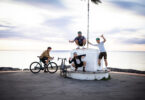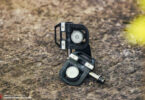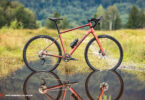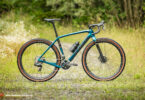Strade Bianche Gran Fondo – Cancellara, Seabase and a Fixie

Lining up at any Gran Fondo is daunting enough, with the thought of taking on Italy’s elite in these pro-race-cum-mass-participation events set to make any rider nervous at the suffering that lies ahead. But calculate the short, steep Tuscan climbs and descents as well as long sections of the region’s renowned Strade Bianche, or white roads, and any sane rider will be questioning their decision. Certainly tough, so why not add in one more factor?

Doing it on a brakeless, fixed gear, track bike, would be nothing short of lunacy. And that’s exactly the incredulous response that met Bern-based, Red Bull athlete Patrick Seabase as he rode up to the front pen in Siena’s citadel. Notorious fixed gear rider and all-round polymath, Seabase had agreed to pin on a number for the Strade Bianche Gran Fondo to get a point-of-view perspective of this scenic route for Red Bull.
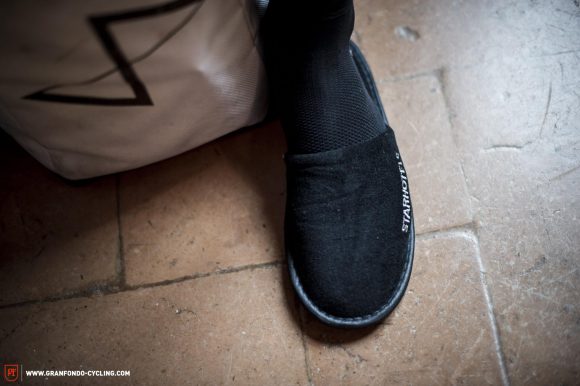

It’s 8am and we sip a cappuccino in the decadent surroundings of Siena’s Grand Continental Hotel. Sat in the heart of this historic city, a day after the fanfare of the professional version of the race, our discussions with Seabase about his imminent start play out to the backing track of rain beating on the glass roof many stories above us. As the water gushes down the internal decorative pipes, the less-than-ideal riding conditions don’t faze Seabase as he puts on his shoes and grabs his rain jacket. He’s more concerned about his GoPro and the gran fondo die-hards who’ll be riding alongside him. Joking with the ever-professional serving staff who flutter silently around the hotel’s breakfast room, he sips another espresso and explains why he is here with close friend and training partner Fabian Cancellara: ‘I’ve always been someone who has tried to change the environment that I ride in, so when Cance [pronounced can-che] invited me to come and ride with him, what could I say? I always see the road as a tool to allow me to ride a track bike, so having the chance to do this on gravel is not only ideal practice for my next project, it’s also an opportunity to show people first-hand what I do.’
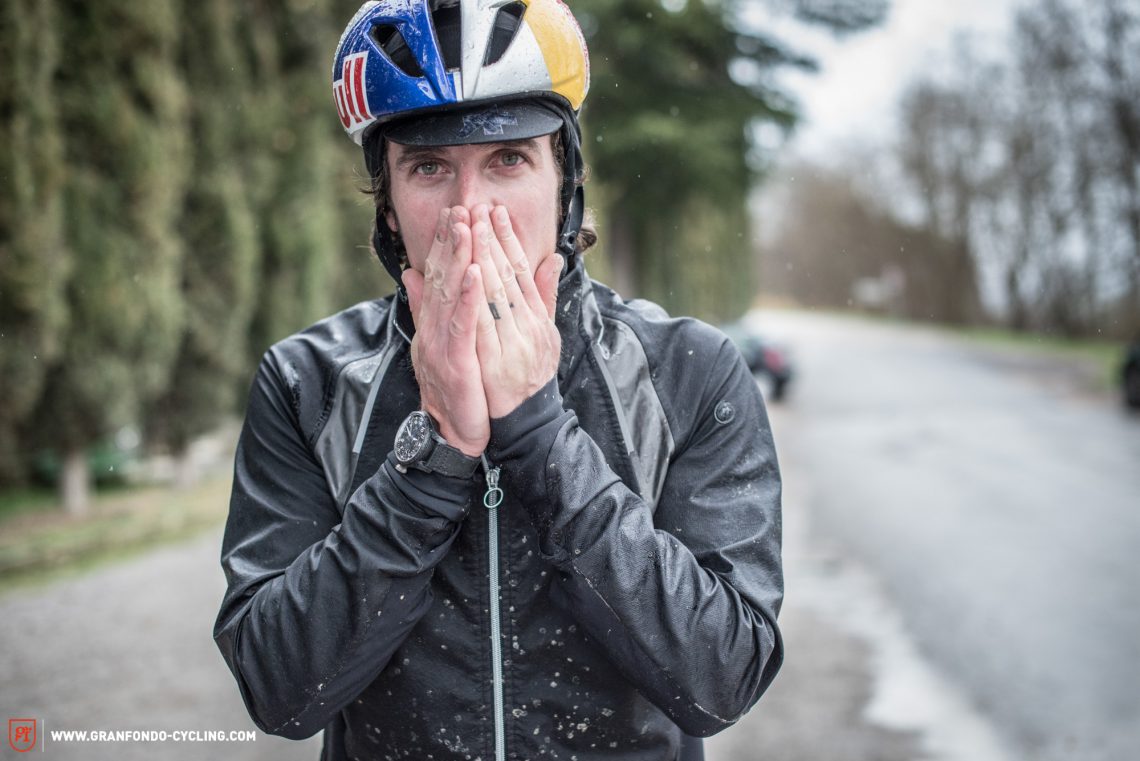
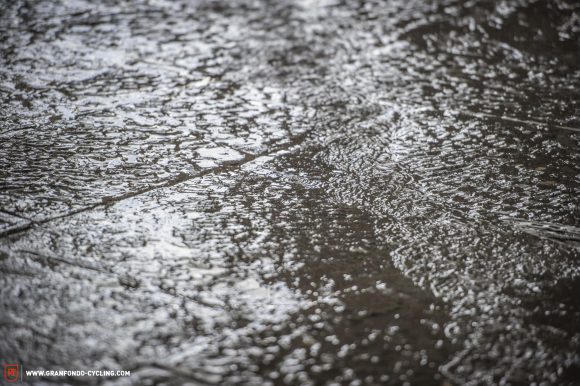
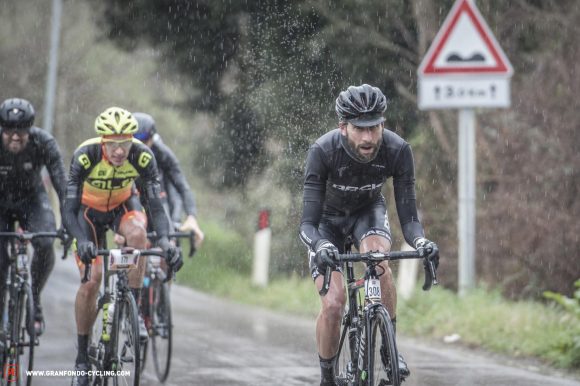
For those that don’t know, the Strade Bianche Gran Fondo is based around the UCI WorldTour version of the event that has rapidly written itself into the history books of cycling. As a professional race it is very young, with its roots only going as far back as 2007. Unlike most bike events, this one flipped convention upside down and actually took inspiration from the retro, mass participation event, L’Eroica. To allow everyone the opportunity to enjoy the iconic white roads of this region of Italy, the organisers had little choice but to insert this hugely popular gran fondo alongside the professional race.
Rather than following the 175 km course of the world’s best men, the Gran Fondo follows the same route as female pros, meaning that Seabase and the other 5,000 riders could pick between the 129.8km gran fondo on the official UCI Women’s WorldTour route or 77 km for the medio fondo. With respectively 30 km or 20 km of gravel, the riders would accumulate a large amount of altitude gain from the virtually constant climbs and descents on both route: two things that are at the centre of Seabase’s riding.


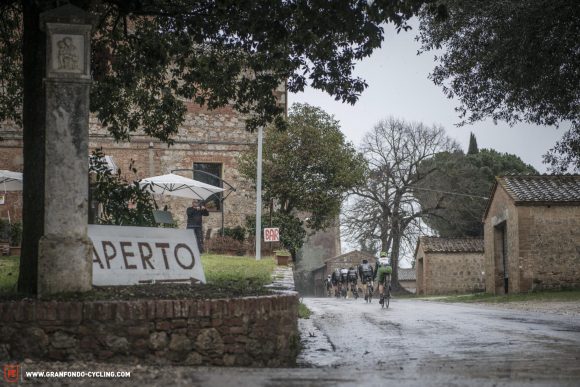
Hugely respected amongst certain circles, Patrick Seabase has carved a name for himself in cycling by taking on the biggest mountain passes on his brakeless, fixed gear bike. These endeavours originated with him taking his town bike, which was fixed gear and brakeless, out of his home city of Bern and out into the surrounding mountains. Coming from a skateboarding background, where he spent a few years as a professional, his eye for design and a distinct aesthetic saw him begin by creating mood clips of his adventures, which rapidly caught the curious eyes of the cycling masses. This notoriety piqued the interest of notorious extreme sports partner Red Bull, who decided to collaborate with Seabase and, as they say, the rest is history. His last major project, #Seabase1910, saw him ride the “murder stage” of the 1910 Tour de France, covering over 300km with 5 mountain passes (brakeless and fixed, naturally). Usually the lone wolf of cycling, it’s somewhat perplexing to see Seabase with the masses, but the allure of the gravel was evidently enough to stir him from his solitary training.

By just over kilometre 30, the rain has intensified and Seabase is thoroughly covered in a slick film of white mud, splattered artfully onto his typical all-black outfit. Rolling in a while behind the leading pack, he is cold and nervous, evidently frustrated with the ‘human bullets’ that are Italian Gran Fondo riders who’re fearless as they ride the course. You can clearly see that the concentration is taking its toll on Seabase, as he grabs a quick coffee to warm up in a local bar. He comments: ‘I’m not pushing watts downhill so I’m getting cold on the descents. They’re unknown to me so I’m not up for taking many risks today,” he explains. “Imagine the concentration of a 140 cadence with human bullets ticking by.” Next to him, a man is contorted into a ball, racked with tears due to the unseasonable cold. Seabase offers aid to this rider who has clearly underestimated the elements. With another 47km left, Seabase checks his rear tyre (essentially his brake pad), and heads out, commenting that riding on the soaked strade bianche is like skidding on soap.
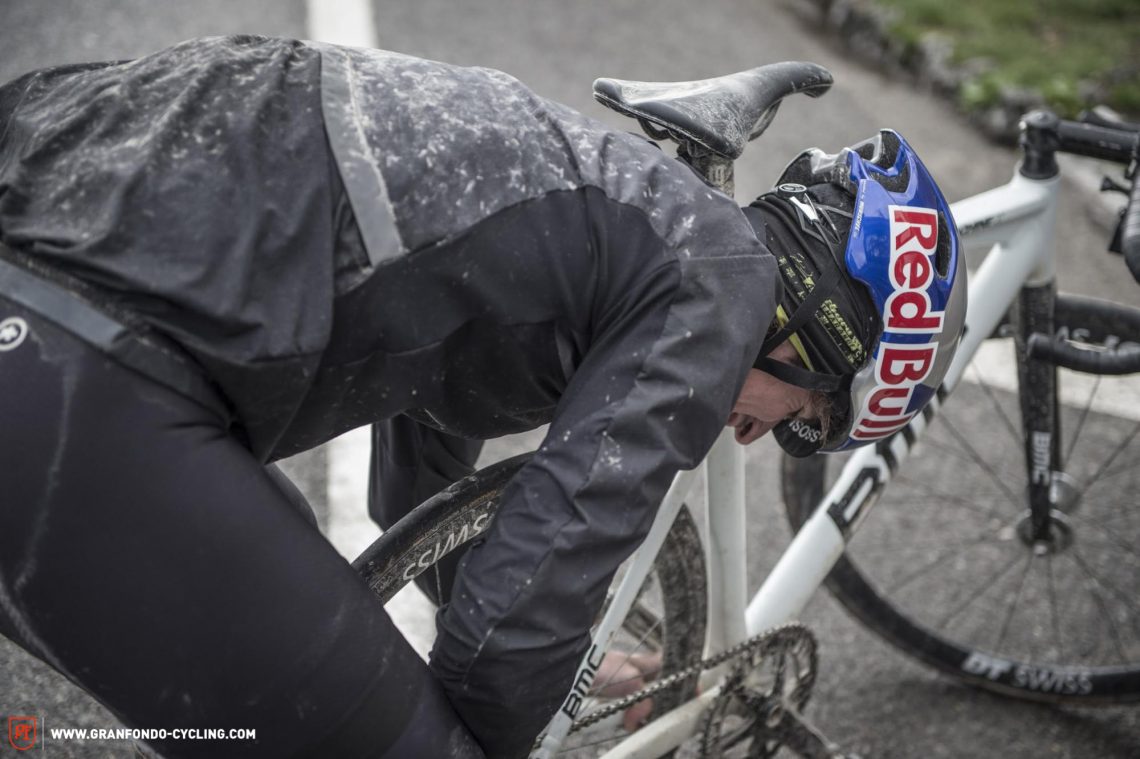
As we hopped from one zone of white roads to the next, the weather does not let up, and the man we saw struggling with the cold in the cafe earlier becomes a familiar scene as we pass riders plagued by mechanical issues. But it is clear that this does not infringe on their enjoyment, because, after all, the rolling hills of southern Tuscany are still beautiful, even with this grey backdrop. Closing in on the finish, the original mass of riders that left the citadel of Siena hours early has turned into a trickle, as the course splits the ability levels. It is really only when you are on these roads that you appreciate how tough the pro-race is. Unlike Paris-Roubaix, this is far from flat, and unlike Flanders, the climbs are longer with very few flat sections in between.
To add one final challenge to both routes, the riders encounter a 15% straight shoot-up into Siena’s old city. Flanked by high buildings, it is in these narrow streets that the fans on both days cheer on the heroes. Some riders are forced to walk, as others sprint up to put on a show for the crowd. But this last-ditch effort is soon forgotten as 300 metres after the summit, the riders are embraced by the wonder of the city’s Piazza del Campo, Siena’s most famous attraction, as the location for the finish.
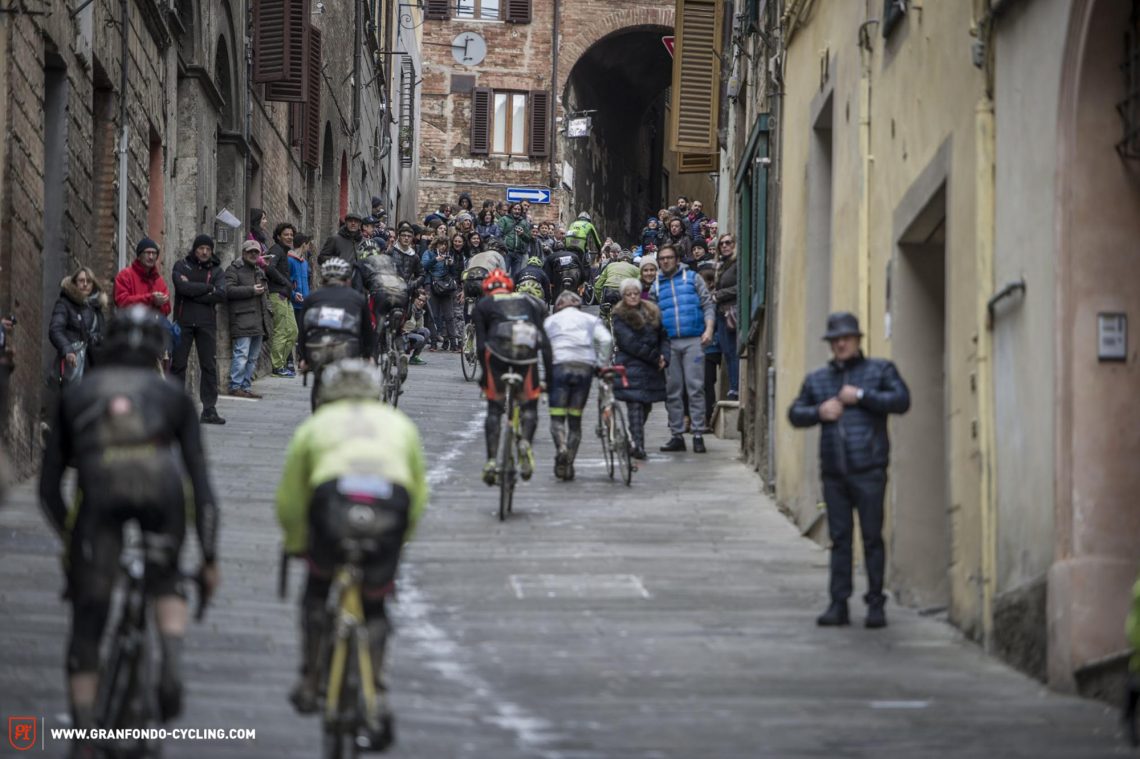

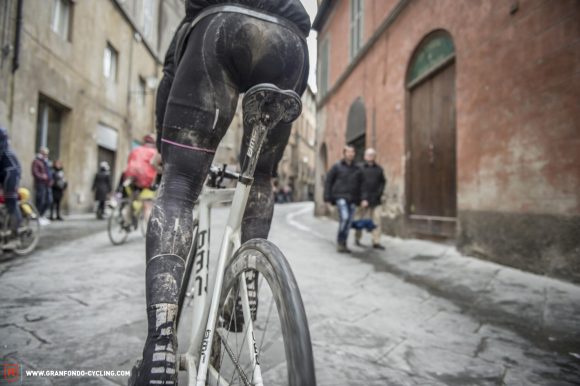
Back at the hotel after Seabase has showered we chat again over another coffee, accompanied by the same chorus of rain that was our breakfast’s backing track. ‘I don’t think that my bike was quite the right tool for the job today.’ Seabase admits, flashing the tattoos in his fingers as he toys with his coffee cup. He continues: ‘It was almost as though I was riding at a syncopated rhythm to everyone else. I mean, there’s no way I could have kept up with Cance on that starting downhill. 47×19 was too small. This meant that I was drifting back into the pack of other riders right from the start. These guys clearly fearless on the descents as they fired past me, but as soon as we hit the climbs I would pass them almost immediately, raking in tens of riders each time. Plus, they almost certainly weren’t expecting me to have to skid on the descents to brake, which meant that we all needed to concentrate more. I like to skid on gravel but as soon as the other riders become human bullets there’s too much to focus on. Riders just aren’t expecting me to be skidding and whipping.’
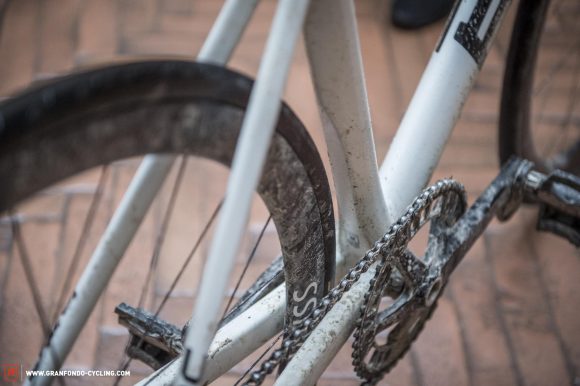
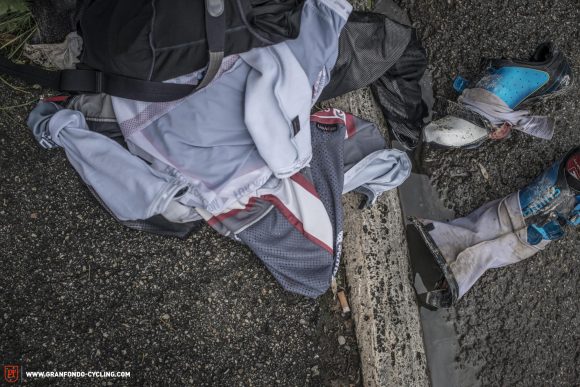
It is clear that bike events are classified for certain bikes for a reason: to level the playing field. Riding a fixed gear, brakeless bike in a gran fondo could be seen as driving a dragster on a formula one track; taking a machine designed for one discipline into another. As we continue chatting to Seabase, he confirms how out of his element he felt. Normally free to ride with the road as his tool, this gran fondo had plunged him into a myriad of external factors that weren’t within his control. Thought not one to conform to convention, it seems only fitting that we got to witness him pushing his boundaries once again. ’Focusing on the other riders going 80km/h, then hitting 15% sections of tarmac meant it was a totally different style of riding to what I’m used to. I was happy to see the uphills, whatever the gradient. But I definitely think it was an outcome you could have predicted,” he laughs wryly. “Sometimes you just have to confirm what your instinct tells you. But I’ve still not had my fill of gravel.’
Did you enjoy this article? If so, we would be stoked if you decide to support us with a monthly contribution. By becoming a supporter of GRAN FONDO, you will help secure a sustainable future for high-quality cycling journalism. Click here to learn more.
Words: Philip Gale Photos: Emmie Collinge, Philip Gale

